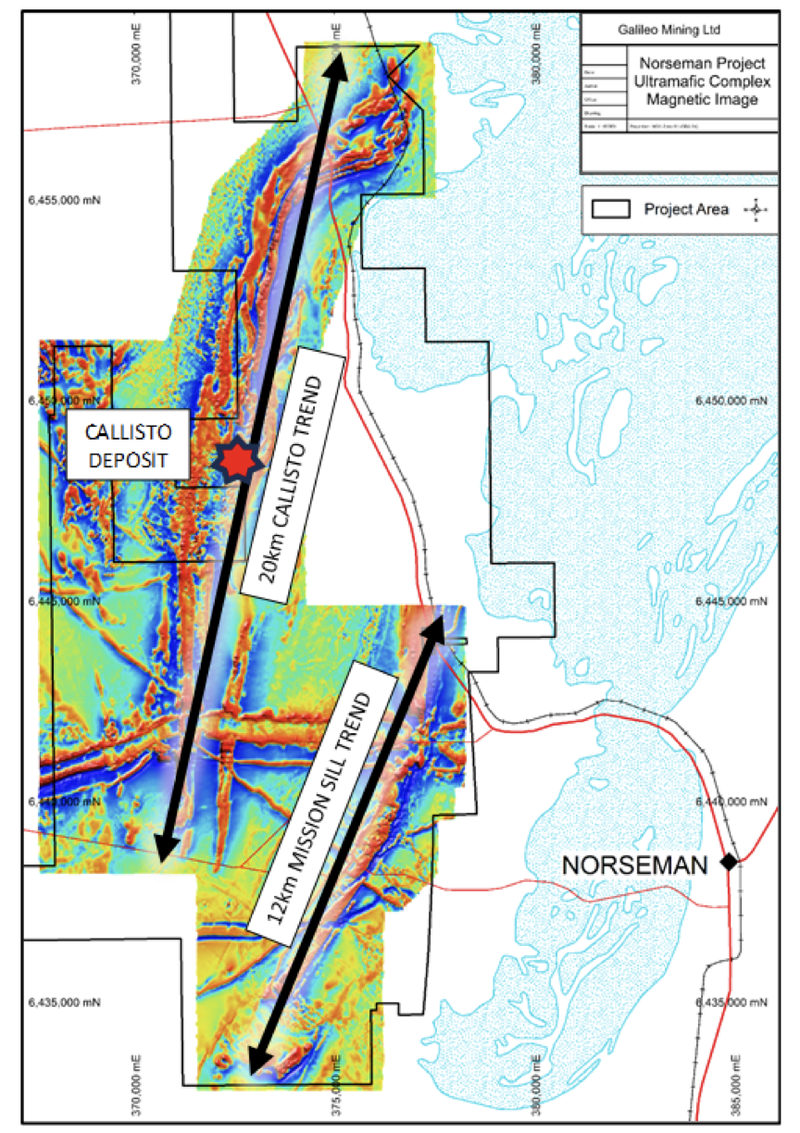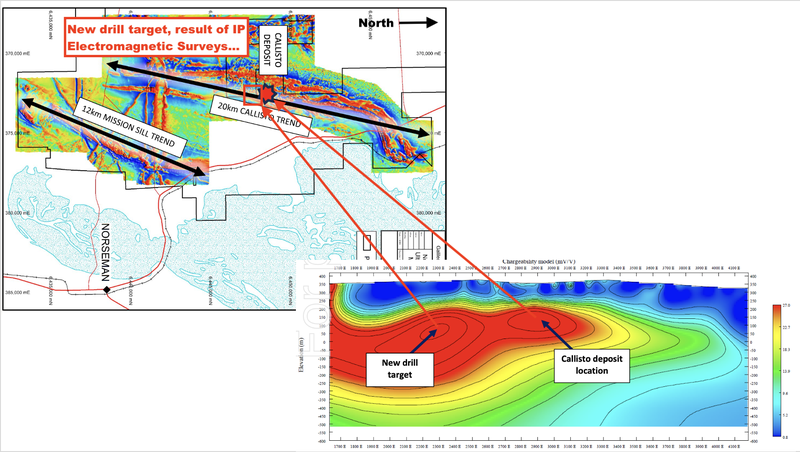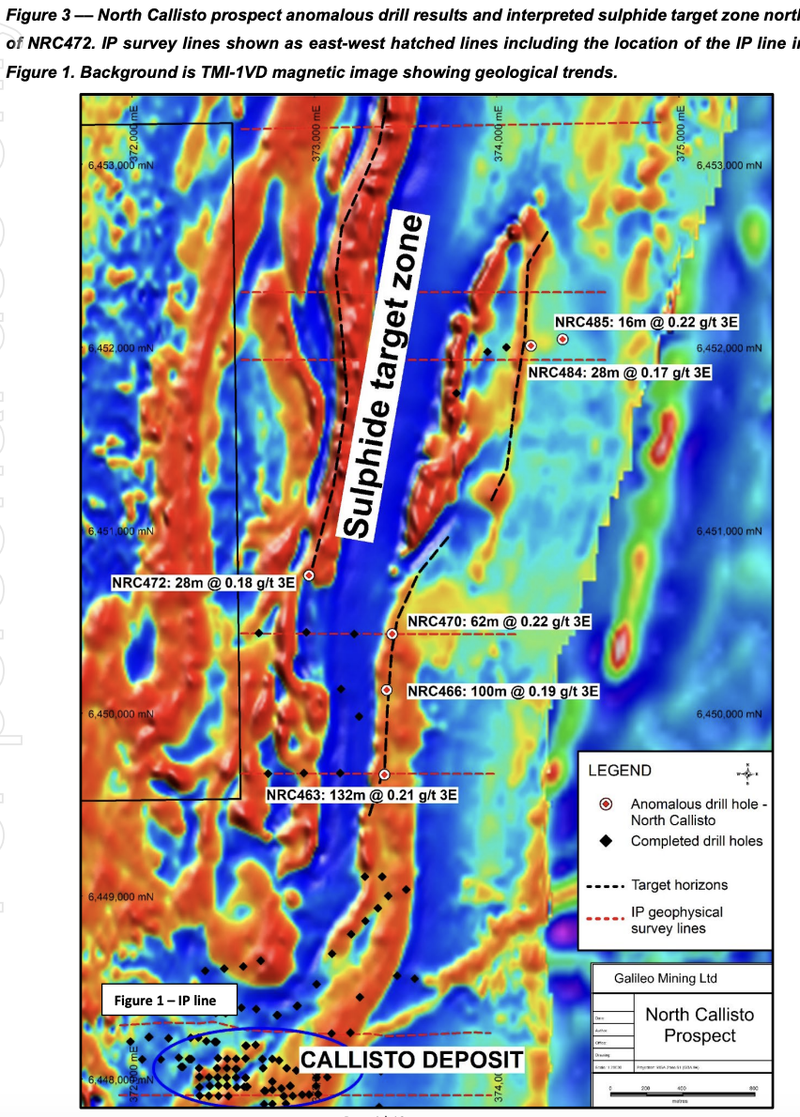GAL: Geophysics surveys complete and results
Today, our PGE Investment - Galileo Mining (ASX: GAL) - has announced the results for its geophysics surveys that it conducted earlier this month, targeted near the areas surrounding the Callisto deposit.
The survey results also highlight strong “chargeable features” associated and on-trend to the Callisto deposit.
What are IP Surveys?
IP surveys (geophysics) is one of the most commonly used techniques to help explorers narrow down drilling targets.
At a very high level - companies use machines to send down powerful electromagnetic signals into the ground.
When the signal hits a layer of rock or minerals that conducts electricity (like nickel, copper and other base metals), the signals change and help the company build a model of what might be underground.
Basically it is a way for companies to narrow down a larger area into smaller high priority areas that can be drilled.
🎓See our educational article on EM surveys here: Electromagnetic (EM) Surveys Explained
More on today’s survey results…
For context - GAL had over ~20km of strike to test at Callisto and ~12km at Mission Sill.
By running geophysics it has narrowed down on the highest priority areas of the ~20km strike most geologically analogous to the Callisto Deposit.

The surveying found a strong “chargeable feature” next to the main Callisto deposit, which is represented by a large red ‘blob’ that has been previously or had limited drilling:

This result of the geophysical surveys point to the possibility of disseminated sulphides being present here. Ideally, we hope, these sulphides prove to be very similar to the Callisto discovery.
In geological terms, these types of deposits with large strikes are referred to as “Plantereef” style PGEs. Last month, GAL confirmed that it is chasing such a style of deposit, where the deposits contain consistent mineralisation, and met-work is simpler and less expensive. We wrote about it here.
In addition to the results of the Electromagnetic surveys, GAL also released some assay results from early drill campaigns in September and October at the North and South Callisto prospects.

At North Callisto, one of the noticeable assay results was from hole NRC472 sits nicely along the Callisto strike, and shows that the mineralisation does indeed match to the existing discovery.
In simple terms, what all this means is that the type of mineralisation picked up at the Callisto discovery - a form of “ultramafic” intrusion - seems to extend at various parts of the ~20km strike and means GAL - has effectively picked up on a mineralisation “signature” that can repeat along the trend.
Meaning a higher probability of exploration success - GAL knows where to look, and what to look for.
Managing Director, Brad Underwood, commented on today’s announcement:
“...We are now confident that IP surveying for new discoveries within the 20km of prospective strike length around Callisto, and the 12 km of prospective strike length at Mission Sill prospect, will identify sulphides…”
This adds more confidence to the GAL story, and proves that Callisto could turn into a much larger, development ready PGE asset than thought before.
What’s next for GAL…
Drilling to the north and south of Callisto 🔄
GAL expects assays from the recent drill program to come back in December.
Drilling at the Jimberlana South prospect (late November) 🔲
GAL expects to be drilling at Jimberlana South in late November.






